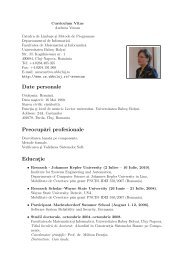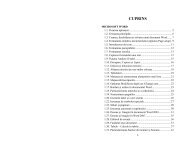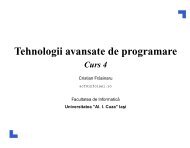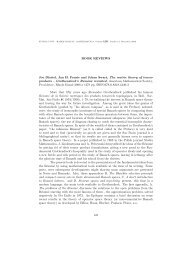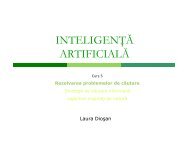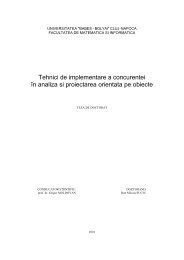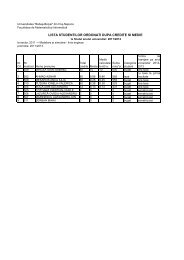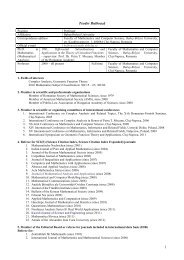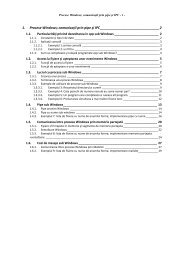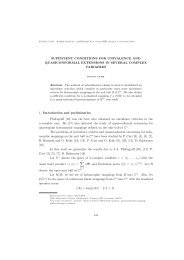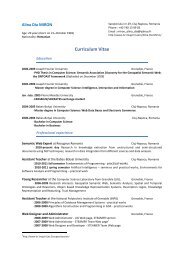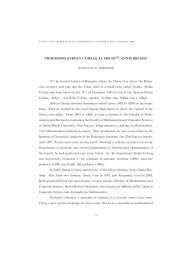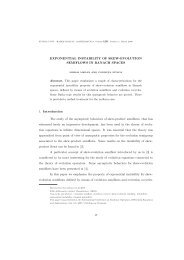CONTENTS
CONTENTS
CONTENTS
You also want an ePaper? Increase the reach of your titles
YUMPU automatically turns print PDFs into web optimized ePapers that Google loves.
EFFORT ESTIMATION BY ANALOGY USING A FUZZY CLUSTERING APPROACH 203<br />
of the system, the required reliability, the number of inputs, the number of outputs,<br />
the number of files, the number of screens and so forth. If we use n characteristics<br />
to describe a project, it is represented as a point in the n-dimensional Euclidean<br />
space. The similarity of two projects may be defined as the distance between the<br />
corresponding points.<br />
Estimating the cost of P by analogy is reduced to finding the closest previously<br />
completed similar project S. Then the actual data from the project S is extrapolated<br />
to estimate the cost of P .<br />
An improvement to the above described method is to select some projects most<br />
similar to P and to deduce the cost for the proposed project from data of these most<br />
similar completed projects. Here we suggest using both the well-established Fuzzy<br />
Hierarchical Clustering procedure and as well a restricted approach thereof, to find<br />
the class C of the most similar projects to P .<br />
The cost of P is computed as a weighted average of Cost(P ; S) for S ∈ C, i.e.<br />
Cost(P ) = w(S) × Cost(P ; S), S ∈ C<br />
where the costs Cost(P ; S) are estimations of Cost(P ) based on information available<br />
for project S, the weights w(S) are determined based on the membership degrees of<br />
all items in the class and the sum of all w(S) for all S ∈ C is 1. Alternate estimations<br />
of the cost will be studied in a future paper.<br />
2. Restricted Fuzzy Clustering<br />
Let us consider a set of classified objects, X = {x 1 , . . . , x p } ∈ R s and the fuzzy<br />
partition P = {A1, . . . , An} corresponding to the cluster substructure of the set X.<br />
Let x 0 ∈ R d be an object that needs to be classified with respect to the fuzzy partition<br />
P .<br />
The algorithm we are presenting here computes the optimal fuzzy partition ˜ P<br />
corresponding to the set ˜ X = X ∪ {x 0 }, by using a mechanism similar to Fuzzy nmeans,<br />
with the difference that the membership degrees of the objects in X to the<br />
classes Ai, i = 1, . . . , n may not be modified.<br />
In what follows we consider a metric d in the Euclidean space R s . We will<br />
suppose that d is norm induced, so d(x, y) = (x − y) T M(x − y), x, y ∈ R s , where M<br />
is a symmetrical and positively defined matrix.<br />
The objective function we have in mind for our problem is similar to that for the<br />
Fuzzy n-Means Algorithm:<br />
˜J( ˜ P , L) =<br />
n<br />
p<br />
i=1 j=0<br />
Ai(x j ) 2 d 2 x j , L i ,<br />
with the mention that Ai(x j ) are kept constant for each i and for j = 1, . . . , p.<br />
The main result with respect to determining the fuzzy partition ˜ P and its representation<br />
L minimizing the function ˜ J is the following



